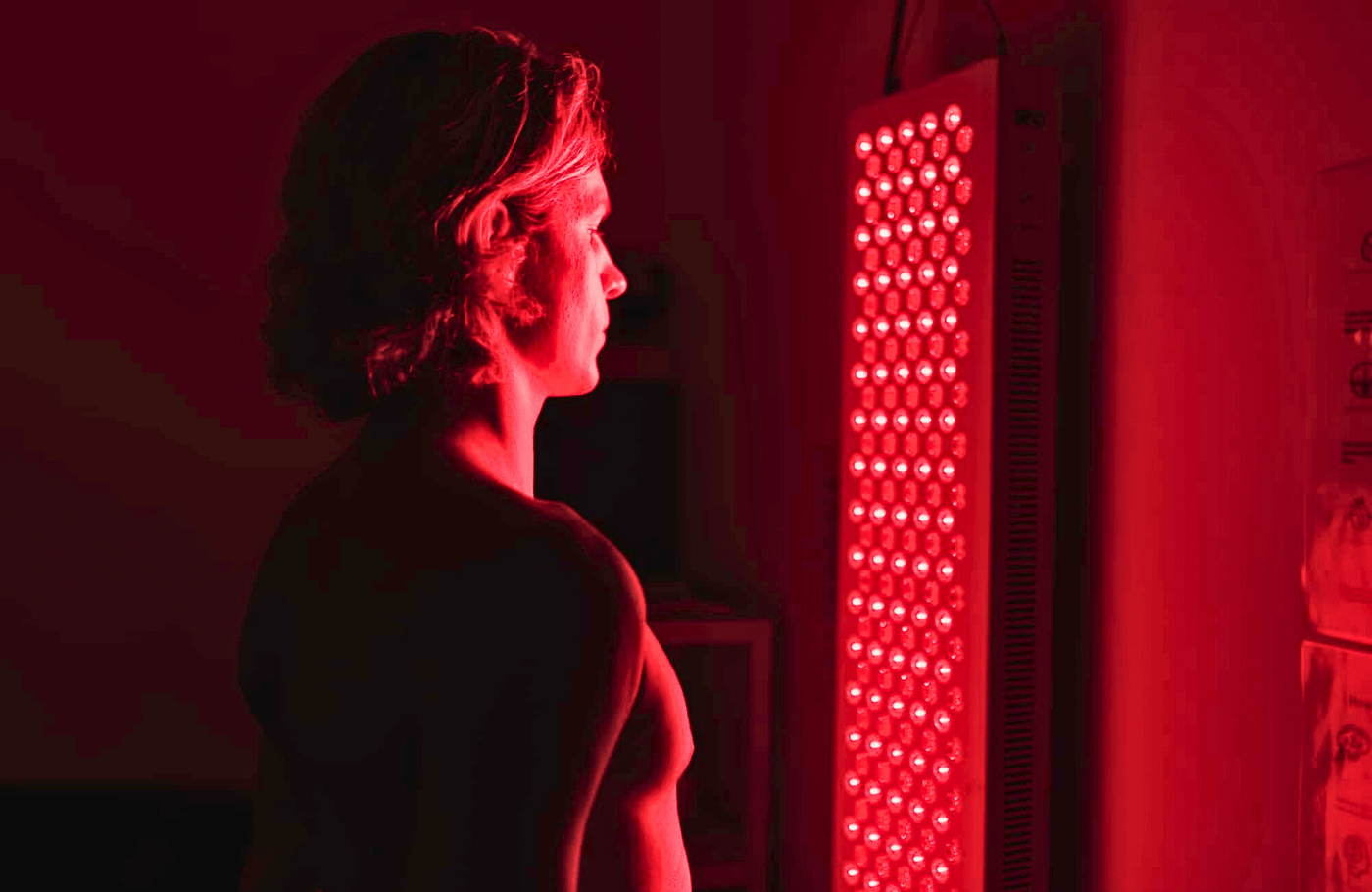Red light therapy (RLT) and near-infrared therapy (NIRT) have gained increasing attention in recent years for their potential therapeutic benefits across a range of medical and aesthetic applications. These therapies utilize specific wavelengths of light to penetrate the skin and stimulate cellular processes, offering a non-invasive and potentially effective alternative or complementary treatment for various conditions.
Mechanism of Action
At the core of red light and near-infrared therapy is the interaction between light and cellular components, particularly chromophores like cytochrome c oxidase in mitochondria. When exposed to specific wavelengths of red and near-infrared light, these chromophores can absorb photons, leading to increased ATP production, improved cellular metabolism, and enhanced tissue repair and regeneration.
Clinical Applications
-
Skin Health and Anti-Aging
RLT has been widely studied for its potential benefits in improving skin health and reducing signs of aging. Research suggests that RLT can stimulate collagen production, reduce inflammation, and enhance wound healing, making it a popular treatment for conditions like wrinkles, scars, and acne.
-
Pain Management and Rehabilitation
NIRT has shown promise in managing various types of pain, including musculoskeletal pain, neuropathic pain, and arthritis. By improving blood circulation, reducing inflammation, and accelerating tissue repair, NIRT can help alleviate pain and promote faster recovery in injured or inflamed tissues.
-
Hair Growth
Preliminary studies have indicated that RLT may stimulate hair growth by promoting blood flow to the hair follicles, increasing follicular thickness, and prolonging the anagen (growth) phase of the hair cycle. This has led to its exploration as a potential treatment for conditions like alopecia.
-
Neurological Disorders
There is growing interest in the use of NIRT for neurological conditions like traumatic brain injury, stroke, and neurodegenerative diseases. Preliminary studies suggest that NIRT may have neuroprotective effects, promoting neuronal survival and function, and improving cognitive outcomes.
Safety and Side Effects
One of the key advantages of red light and near-infrared therapy is its generally favorable safety profile. Most studies have reported minimal side effects, with the most common being temporary skin irritation or mild discomfort at the treatment site. However, as with any medical treatment, it is essential to consult with a healthcare professional before starting therapy, especially for individuals with pre-existing medical conditions or those taking medications that may interact with light therapy.
Conclusion
Red light and near-infrared therapy offer a promising and non-invasive approach to treating a variety of medical conditions, ranging from skin health and pain management to neurological disorders. While further research is needed to fully understand the mechanisms of action and optimize treatment protocols, existing studies suggest that these therapies can be a valuable addition to the therapeutic arsenal. As always, it is crucial to consult with a healthcare professional to determine the most appropriate and effective treatment plan for individual needs.
References
Footnotes
-
Hamblin, M. R. (2017). Mechanisms and applications of the anti-inflammatory effects of photobiomodulation. Atherosclerosis, 61(1), 91-99. ↩
-
Avci, P., Gupta, A., Sadasivam, M., Vecchio, D., Pam, Z., Pam, N., & Hamblin, M. R. (2013). Low-level laser (light) therapy (LLLT) in skin: stimulating, healing, restoring. Seminars in cutaneous medicine and surgery, 32(1), 41-52. ↩
-
Leung, M. C., Lee, F. K., & Lai, K. W. (2017). The effectiveness of low-level laser therapy in shoulder tendinopathy. Hong Kong medical journal, 23(2), 165-172. ↩
-
Gupta, A. K., Foley, K. A., & Versteeg, S. G. (2017). Hair growth promoting properties of topical indole-3-carbinol containing formulation in mice. Archives of dermatological research, 309(5), 373-378. ↩
-
Naeser, M. A., Zafonte, R., Krengel, M. H., Martin, P. I., Frazier, J., Hamblin, M. R., & Knight, J. A. (2014). Significant improvements in cognitive performance post-transcranial, red/near-infrared light-emitting diode treatments in chronic, mild traumatic brain injury: open-protocol study. Journal of neurotrauma, 31(11), 1008-1017. ↩
-
Jenkins, P. A., & Carroll, J. D. (2011). How to report low-level laser therapy (LLLT)/photomedicine dose and beam parameters in clinical and laboratory studies. Photomedicine and Laser Surgery, 29(12), 785-787. ↩






